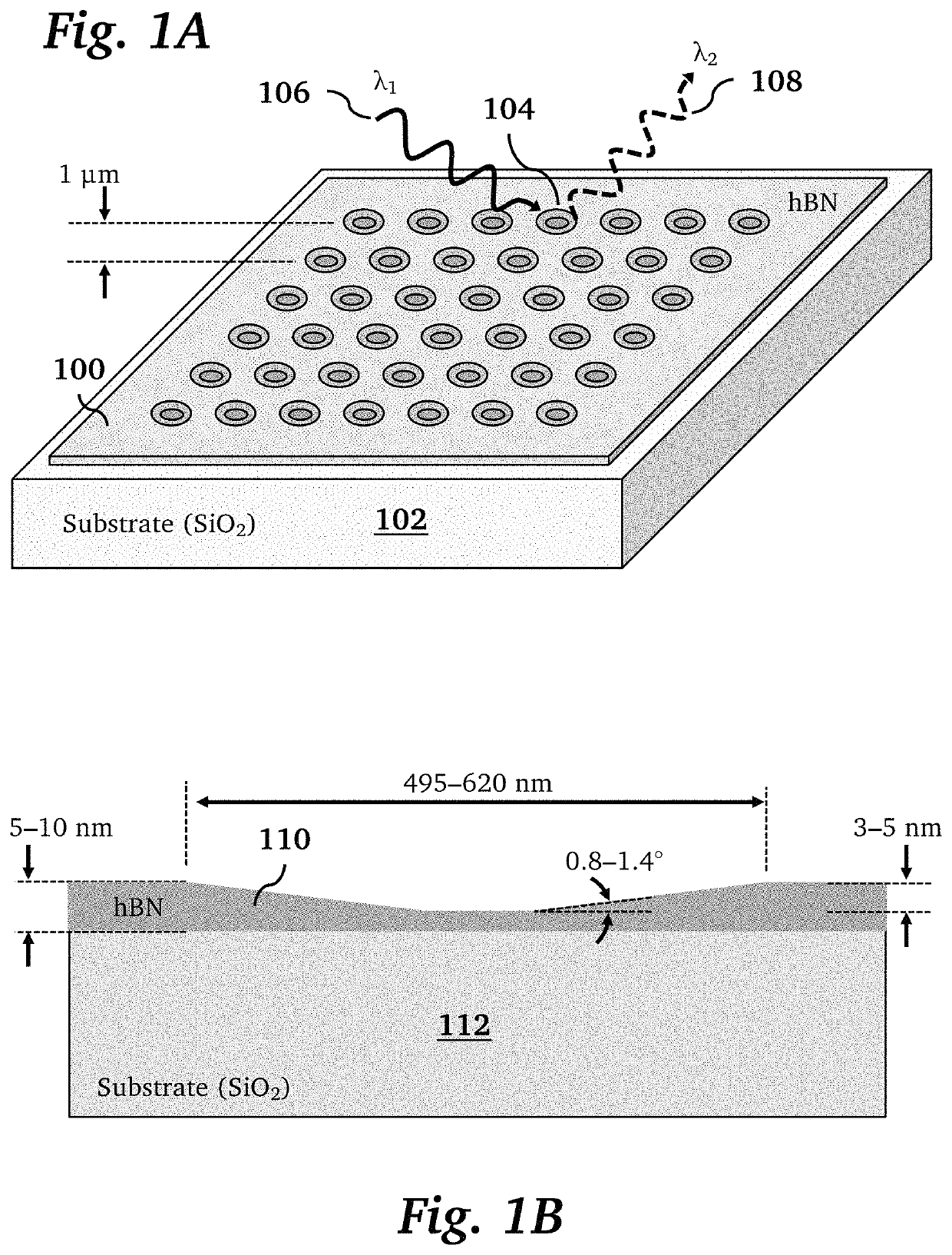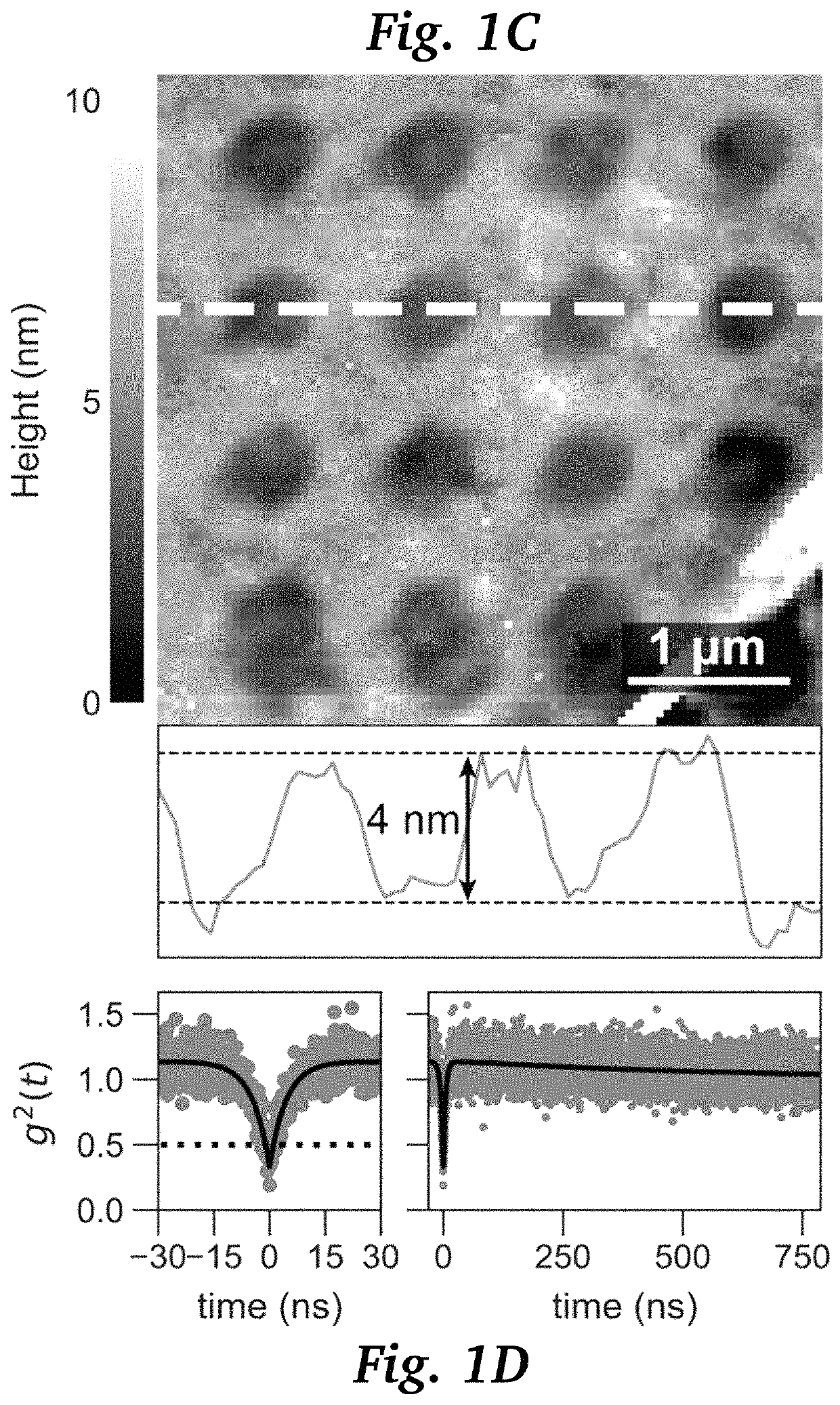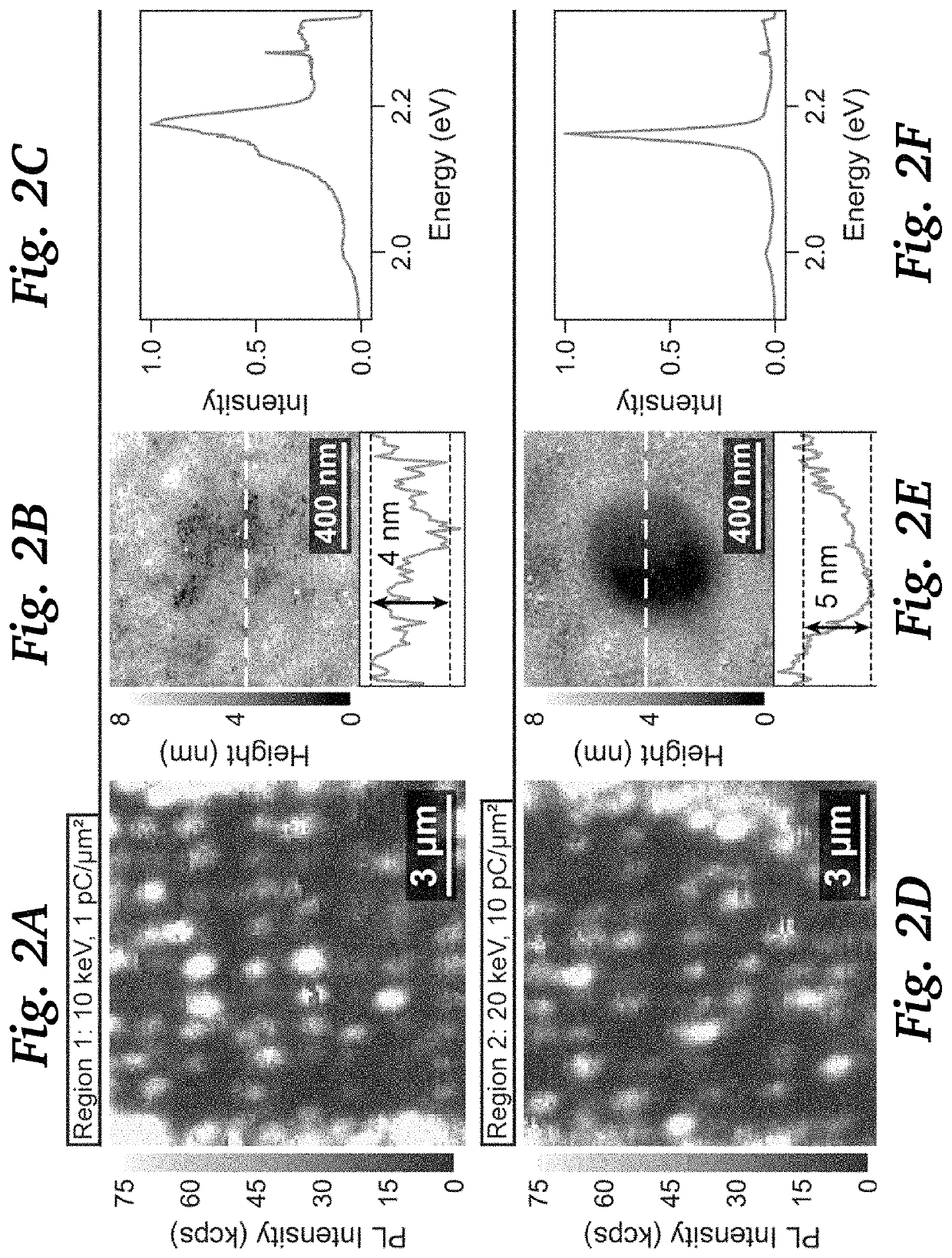Deterministic quantum emitter formation in hexagonal boron nitride via controlled edge creation
a boron nitride and quantum emitter technology, applied in the field of solid-state optical devices, can solve the problems of limiting the viability of widespread use, complex setup, and no method for deterministically and reliably fabricating qes in hbn at desired locations in a manner, and achieves the effect of broadening the utility and convenience of hbn qes and specific size and shap
- Summary
- Abstract
- Description
- Claims
- Application Information
AI Technical Summary
Benefits of technology
Problems solved by technology
Method used
Image
Examples
examples
[0042]To create QEs in our hBN via edge creation, we transfer few-layer CVD hBN (Graphene Supermarket) onto SiO2 and then use FIB to mill holes into the hBN, thereby forming edges at the hole perimeter. We do not perform an additional irradiation to activate QEs. The required dose to remove hBN material was in the range 10−13 C / μm2 to 10−10 C / μm2, with beam energies from 5 to 30 keV. Initial tests showed that energies of either 10 or 20 keV and milling doses of 1 pC / μm2 were close to optimum for QE creation, as inferred by g2(0)2, while in another region (Region 2) we used 20 keV and 10 pC / μm2. To generate a high density of single, optically addressable QEs with enough perimeter for QEs to form, we FIB patterned arrays of 500 nm diameter circular holes with a center-to-center separation of 1 μm in each region. An atomic force microscope (AFM) image of these holes is shown in FIG. 1C, with a line cut shown below. The FIB was operated at 20 keV and 10 pC / μm2. The depth of the holes fo...
PUM
| Property | Measurement | Unit |
|---|---|---|
| side wall angle | aaaaa | aaaaa |
| depth | aaaaa | aaaaa |
| thickness | aaaaa | aaaaa |
Abstract
Description
Claims
Application Information
 Login to View More
Login to View More - R&D
- Intellectual Property
- Life Sciences
- Materials
- Tech Scout
- Unparalleled Data Quality
- Higher Quality Content
- 60% Fewer Hallucinations
Browse by: Latest US Patents, China's latest patents, Technical Efficacy Thesaurus, Application Domain, Technology Topic, Popular Technical Reports.
© 2025 PatSnap. All rights reserved.Legal|Privacy policy|Modern Slavery Act Transparency Statement|Sitemap|About US| Contact US: help@patsnap.com



